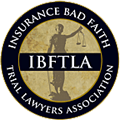Zofran Birth Defects
Zofran is a drug that has been linked to birth defects including heart injuries, kidney injuries, and cleft palate. Fear, anger, sadness, and helplessness are just a few of the feelings we, as parents, experience when seeing our children suffering through multiple medical procedures.
I represent children whose mothers took Zofran as prescribed by their doctors to manage a difficult first trimester of pregnancy, only to later learn that the drug caused permanent debilitating birth injuries.
Zofran (ondensetron) is an anti-nausea medication made by GlaxoSmithKline (GSK) that was approved by the FDA in 1991 (injections) and 1992 (tablets), strictly for the treatment of nausea and vomiting for chemotherapy, anesthesia and surgery patients. In 2012, the U.S. Department of Justice filed criminal suit against GSK, ordering them to pay $3 billion for promoting a number of their drugs, including Zofran, for off-label uses and for paying doctors to prescribe their drugs.
Since the FDA only approved Zofran for chemotherapy-related and post-operative nausea, prescriptions for pregnant mothers battling morning sickness is considered “off-label.” Although it is not illegal for doctors to prescribe medications for off-label use, it is illegal for drug manufacturers to promote them for off-label use, which is what GSK plead guilty to doing in the 2012 criminal case against them.

Zofran and Pregnancy: Fetal growth restriction, cleft lip, cleft palate, congenital heart defects, kidney malformation, and other birth defects
The use of Zofran (or ondansetron) in pregnant women has been widely investigated in recent years, and many researchers have concluded that using Zofran during the first trimester of pregnancy – when nausea and vomiting is at its worst – is linked to a variety of birth defects. While Zofran has shown effective in calming nausea and vomiting, it has also shown to be quite dangerous to the developing fetus, with the potential to cause birth defects that include growth restriction, cleft lip, cleft palate, congenital heart defects, ventricular septal defects (also known as “hole in the heart”), atrial septal defects, and kidney malformation.
Zofran can readily cross the placental barrier at significant levels, according to a study titled Placental Transfer of Ondansetron during Pregnancy. According to this study, significant amounts were found in fetal tissue and amniotic fluid. Another 2011 study titled “Medications Used to Treat Nausea and Vomiting of Pregnancy and the Risk of Selected Birth Defects” suggested that Zofran birth defects actually doubles the chance of babies being born with cleft palate.
Despite its known risks, and despite the fact that Glaxo itself admits Zofran has not been tested for use in pregnant women, doctors have not stopped prescribing it to pregnant mothers, and the FDA has not stopped them from doing so. Doctors have the legal responsibility to inform their patients of all known risks of the medications they prescribe, but they are not prohibited from prescribing medications in ways for which they have not been proven safe.
Protecting the Rights of Babies Born with Defects due to Zofran
If you took Zofran (Ondansetron) during your first trimester or pregnancy and your baby was born with birth defects, you may be entitled to compensation from the drug manufacturer. The Sacramento product liability lawyers at Eric Ratinoff Law have over twenty years of experience handling complex medical cases, and we are actively investigating the links between Zofran and birth defects. Our Zofran birth defect attorneys handle cases nationwide and would be happy to discuss your situation with you, free of charge and obligation. Fill out the form on this page, or call us toll free at (866) 527-4278 for a free and confidential case evaluation.

















